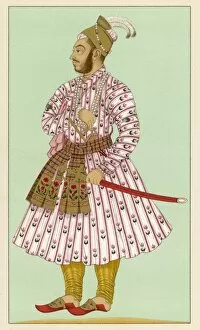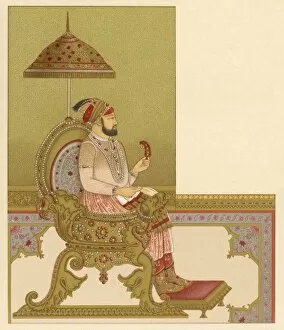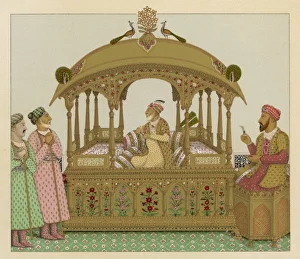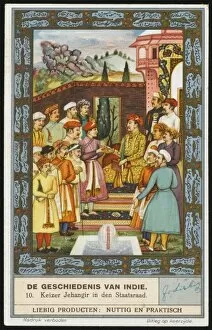Mughal Collection (page 44)
The Mughal dynasty, known for its rich cultural heritage and architectural marvels, left an indelible mark on India's history
For sale as Licensed Images
Choose your image, Select your licence and Download the media
The Mughal dynasty, known for its rich cultural heritage and architectural marvels, left an indelible mark on India's history. From the exquisite Mughal miniatures depicting tales like Layla and Majnun in the wilderness with animals, to the grandeur architecture seen in Delhi's majestic structures, their legacy continues to captivate us. One cannot help but be awestruck by the iconic Taj Mahal, a testament to love and beauty that stands tall even today. Its intricate design and flawless symmetry are a true reflection of the artistic brilliance of the Mughals. However, not all stories associated with this dynasty are as romantic as Shah Jahan's devotion to Mumtaz. Captain Henry Avery, a notorious pirate who plundered Indian treasures during his reign in the 17th century, also crossed paths with these rulers. In contrast to such tales of adventure and piracy is Jahangir's relationship with his father Akbar. A folio from the Shah Jahan Album showcases their bond through a mesmerizing Mughal painting that captures their regality and familial connection. Mughal artistry extended beyond human subjects; it encompassed nature too. The game of wolf-running in Tabriz depicted in an Akbar-nama reveals their fascination with wildlife. Similarly, a floral fantasy called Waq-waq presents animals and birds beautifully intertwined amidst vibrant blooms - showcasing their imagination at its finest. As we delve deeper into this captivating era, we encounter architectural wonders like Lahore's marble pavilion nestled within Fort Gardens or Sezincote in Gloucestershire - home to Baronet Rushout during c1880 - both bearing influences from Mughal aesthetics. Lastly, Bahadur Shah II emerges as one of the most prominent figures associated with this dynasty. As India's last Mughal emperor (1837-1858), he witnessed significant political changes while leaving behind a remarkable Mughal painting that immortalizes his reign.







